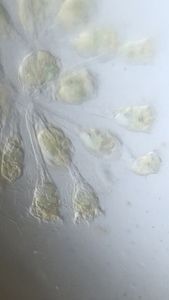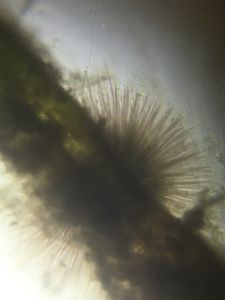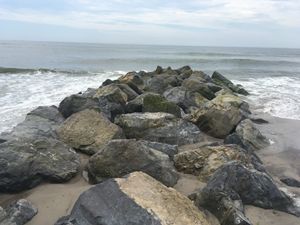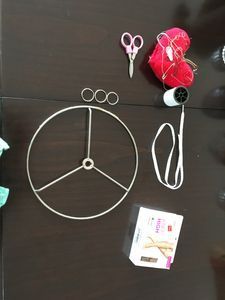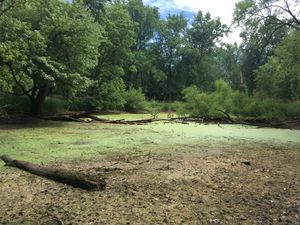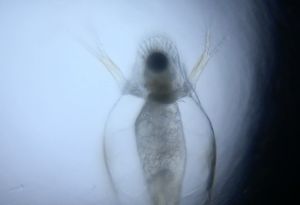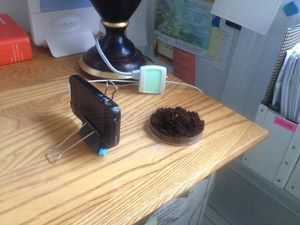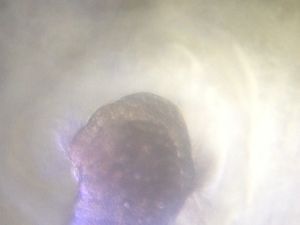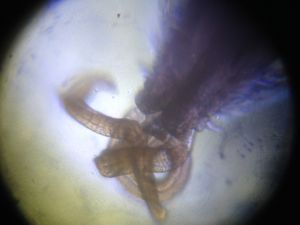Why, as an Artist, I’m Excited about the Foldscope
 Dec 02, 2015 • 3:37 PM UTC
Dec 02, 2015 • 3:37 PM UTC Unknown Location
Unknown Location 140x Magnification
140x Magnification Unknown
Unknown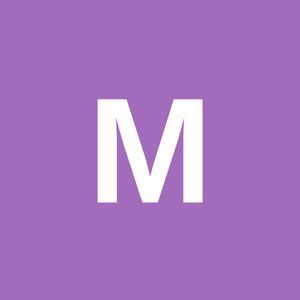
Matthew Rossi
I'm a novelist, essayist, and a writing consultant. I work in the writing centers at Columbia and Baruch University and explore research into the overlap of maker cultures and writing. My work with the Foldscope tends to focus on finding wild creatures in urban spaces and looking at how human works are shaped by the movements of the biosphere.
40posts
105comments
4locations

A few weeks back Saad posted an essay titled “ As a Scientist, Why I’m Excited about the Foldscope, ” which talked about the value of the Foldscope as a tool for science, including papers written about it. Saad’s post sort of bounced off of some thoughts I’ve had for a while about my own use of the Foldscope and my own interest in searching through drops of water for motile dots to look at more closely. See, technically (which is to say, professionally) I’m not a scientist. I’m a writer. I’m not even really a science writer (though lately I find myself writing a lot about science); normally, I write fiction. So when people ask me things like “why all the microscopic photography?” I’m at a bit of a loggerheads to know how to respond. To date, the best I’ve come up with is “because it’s cool,” which doesn’t seem to capture the full value of the thing in any significant way.
I want to be clear that I don’t think of science and art as opposing terms. The list of scientist artists and artists who like science is too long for that sort of nonsense. Science and art are two sides of the same coin of investigation and inquiry, but I think there is a useful question to be asked about why a tool like the Foldscope is valuable from a perspective of an artist.
I want to be clear that I don’t think of science and art as opposing terms. The list of scientist artists and artists who like science is too long for that sort of nonsense. Science and art are two sides of the same coin of investigation and inquiry, but I think there is a useful question to be asked about why a tool like the Foldscope is valuable from a perspective of an artist.
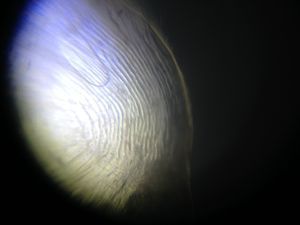
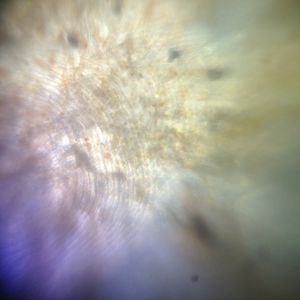
As a tool for art, the Foldscope has enormous potential. Tom sort of demonstrated this as readily as I ever could with his post this morning on stacking and stitching photos . I don’t just mean that because Tom produced a beautiful image, he has made art. It’s the innovation and risk that went into it that, to me, makes this so interesting. I see this sort of thing regularly on this site, and it comes because the foldscope, as a simultaneously useful tool for looking at something, and a paper product–a precious object made out of non-precious materials–invites new approaches to seeing. The resultant image Tom came up with of a barnacle is awe inspiring, not just because it is a cool image, but because it uses tools meant for other things to expand our perspective on something.That shift in perspective, I think, is key in art. Art is worthless, in my opinion, if it just faithfully reproduces the world without helping the viewer see anything new in it. Looking through the foldscope, there is an inherent shift in perspective. The small, which it is important to remember in matters of perspective implies distance, is brought close. And in that action, it is unflattened. In objects and substances in which there was no apparent dynamic, dimension, texture, movement all become apparent.
I saw this in one of the first objects I ever imaged, which was a minnow egg.
I saw this in one of the first objects I ever imaged, which was a minnow egg.
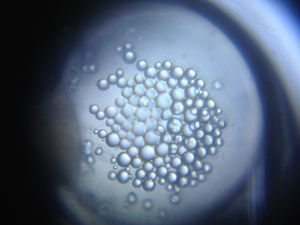
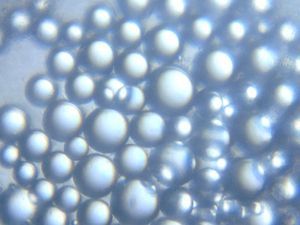
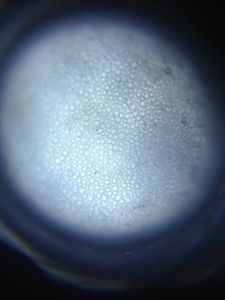
In the middle picture, a closeup zoom of clusters of what I assume are bubbles (they don’t look like cells to me) in the egg, which already denies that the egg is the simple yellowish sphere it appeared to be to the naked eye. Already there is more complexity to the object than that. But it’s the last photo, which is of the surface of the egg, that really intrigued me. What seems to be a smooth, transparent surface is actually speckled and textured, covered in bumps and ridges like the moon of some distant planet. It’s in the viewing of the shell that I see the object’s actual existence as an egg.There’s a kind of empathy that comes from this sort of viewing. What makes it cool on the one hand, and valuable on the other, isn’t just that we’re allowed to see these things, but that seeing with our own eyes somehow validates the lives of the creatures we look at. What continually strikes me as I look through the foldscope is just how much life consistently resembles itself.I see it here. In the movements of this paramecium hunting in a moss leaf (and being pushed by my efforts with the lens).
I see it in the lolling eye of this copepod from the lower harbor of NYC.
It would be a mistake to say that the foldscope makes all life look the same. That’s not the point of looking at anything, but it does act as a tool to allow a larger move of empathy toward things that share our world. I can say from my own experience that it has changed my thoughts about what is interesting in my city. It has found its way into my writing in more ways than just these blog posts–from helping me think about how animals communicate, to simply making me stop and examine the cracks in the sidewalk a little longer.
It’s not that art and science are oppositional, nor that Saad’s post really required a response, but it’s important, I think, to consider how all of these acts of observation and creation work together in a similar vector to communicate the larger world of creatures who otherwise wouldn’t speak for themselves.
It’s not that art and science are oppositional, nor that Saad’s post really required a response, but it’s important, I think, to consider how all of these acts of observation and creation work together in a similar vector to communicate the larger world of creatures who otherwise wouldn’t speak for themselves.
Sign in to commentNobody has commented yet... Share your thoughts with the author and start the discussion!
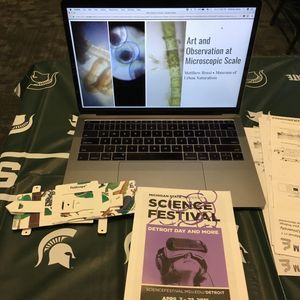
 0 Applause
0 Applause 0 Comments
0 Comments




